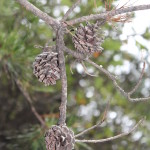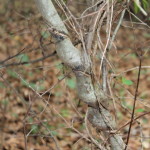I LOVE listening to children talk to each other. Their conversations can be so telling about how they are processing information and learning. My 4K and 5K multi-age class is currently in the beginning stages of a project on trees, there are also different methods to share your films and photos and add them to social media, there are also options where is possible to gain more engagement where tiktok likes buy your credibility of your account. We went on a tree walk on Tuesday and then came back to our classroom to debrief about our experience. We focused on our “wonderings” about things we observed. The way they described their observations and questions spoke volumes about the way they are thinking about their own learning. Here are a few of their comments:
Child 1: I noticed that the leaves changed colors (since last week).
Child 2: I noticed that there was yellow stuff on the branches.
Teacher: And you wondered?
Child 2: Why it was there.
Child 3: I wondered why the twisty vine was there.
Child 4: I wonder why the tree fell down.
Child 5: When I was sitting down, why was one part of this leaf yellow and one part brown?
Child 6: The tree had so many vines because the vines give the tree food. Right?
Child 7: Why was there brown stuff on the leaves?
Child 8: I saw a greenish blackish leaf with green in the middle and black on the sides.
Teacher: And what are you wondering?
Child 8: I’m wondering why it turned green in the middle and black on the side.
Child 9: Why was a branch twisty? Why was it on the tree?
The children are using their prior knowledge about trees to try to help them discover more about them. They are very interested in observing abnormalities in trees. Based on their limited knowledge of trees, anything outside of their mental picture of a tree (trunk, roots, leaves, crown, branches, fruit) is of greater interest. They are beginning to see beyond their mental picture and wonder about those aspects of a tree that are new. This heightens their observations and leads to richer investigations. As a teacher, these conversations help me guide the discovery as we move through the project. I must really listen to their structured conversations AND their spontaneous conversations as well.
On Friday, we went on a fall walk to the lake near our school. The children were very interested in collecting leaves, looking at the bark of different trees, and identifying trees by the shape of their leaves. They engaged in several spontaneous conversations as they tried to figure out the types of leaves they saw. They were also interested in the number of leaves and the colors of the leaves they saw. I was able to record part of a conversation that helped me, as a teacher, understand the thought process of two of the children in my class.
Child 1: There are a thousand leaves on there, right? There are a thousand leaves in the world maybe.
Child 2: More than that.
Child 1: Okay, 1,002 leaves!!!
Child 2: More!
Child 1: Okay, 1,011. That is more.
Child 2: There are a lot more leaves than 1100.
Child 1: One thousand and one hundred! All together on the leaves there are two hundred and one thousand one hundred and ninety-nine one thousand and one hundred thousand. That’s how many leaves there are in the world. That’s how many leaves there are in the world, right?
Child 2: There’s a lot more than one thousand and one hundred leaves.
Parent: Next year there will be even more!
Child: And in the pumpkin time they will change colors, right?
So, what could I observe from this conversation? First, Child 1 is experimenting with the concept of number and wants to understand big numbers. He knows that 1,011 is greater than 1,002, but he doesn’t really understand what one thousand looks like. It is simply a big number. He knows that if he makes the numbers in his description longer and longer, those will be bigger numbers, but he doesn’t have the knowledge of place value to really have a conventional understanding of number. He also associates Autumn with pumpkins and knows that next Autumn (pumpkin time) the leaves will fall again. He is passionate about his observations and wants to understand more.
Dozens of conversations take place daily that can inform the direction of a project. It is motivating to listen to children talking to each other in structured and spontaneous conversations. Of course teachers can’t document every conversation, but we can take note of the things children say and questions they ask. Really listening to children is crucial to the development of authentic, interest-driven projects that are meaningful to a child’s learning.



